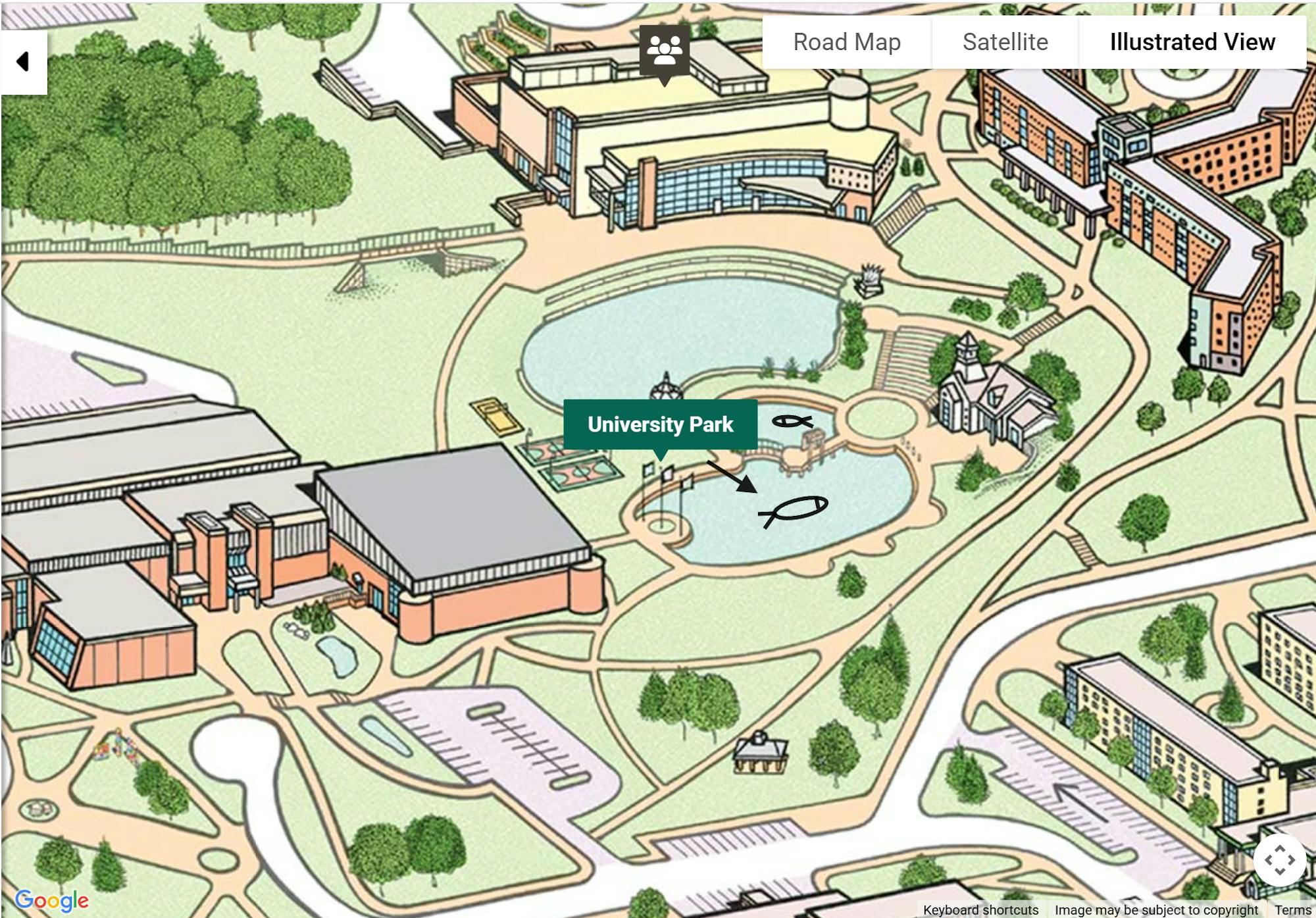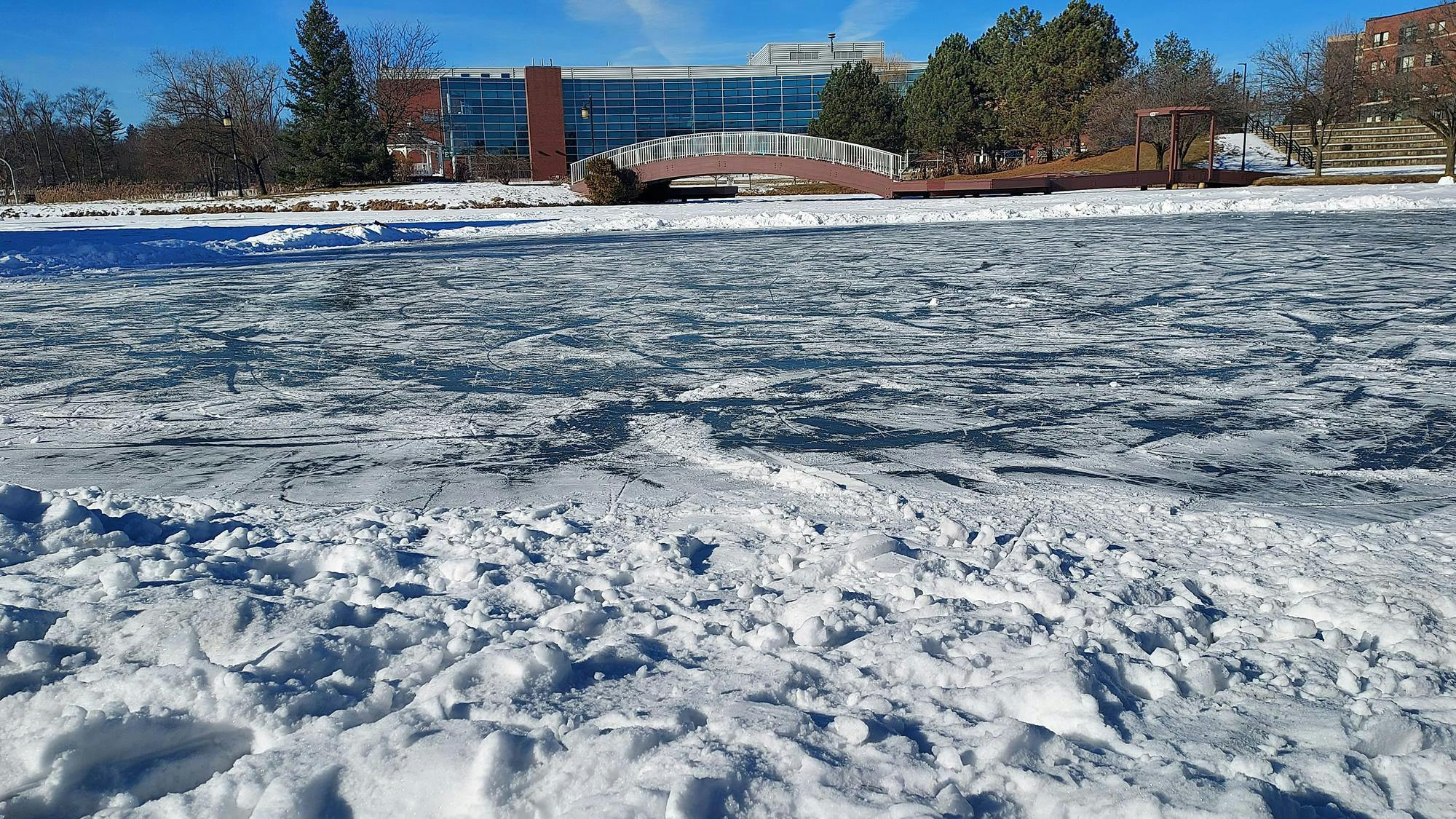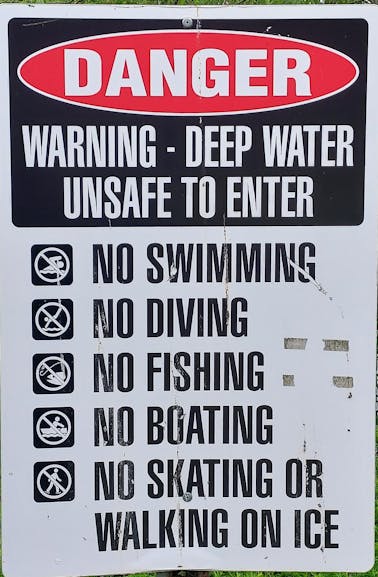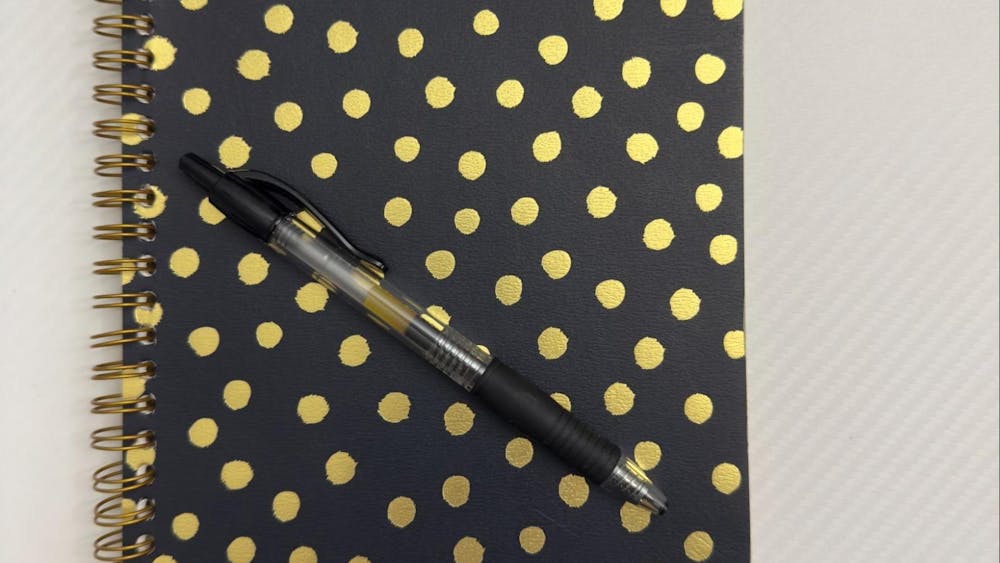By the time most students have left campus for the summer, dozens of koi — large, colorful fish in the carp family — gracefully swim near the surface of one of two ponds near the Eastern Michigan University Student Center. By winter, the fish swim a little deeper due to the foot of ice that usually forms on the water, but they're still at home in the pond.
Who takes care of the koi?
Christopher Grant is the manager in the Physical Plant Department at EMU.
“Really, they are pretty much maintenance-free," Grant said. "They kind of take care of themselves out there.”
The koi are often fed by people who pass by the ponds with pieces of bread, and Grant said that is just fine.
When there are no people to feed them, the koi scavenge on their own. Mostly bottom feeders, koi eat whatever is in the water, including insects and other things that might land in the water.
Grant said the pump for the pond fountain is maintained periodically by the physical plant staff, and the department adds water when the levels get too low.
Overall, the ecosystem manages itself. The park is listed on the university's website as one of the most peaceful spots on campus. Other spaces in that list include the university greenhouse and the South Campus Green.
EMU's Recreation/Intramural Sports Department website states that its department aims to provide a peaceful place for the students and community. The ponds are one of the places where students can relax and take a break from their busy school routines.

The Eastern Michigan University park map is available on the official EMU website. Fish illustrations were added to the map at the pond where koi fish live. Courtesy of: Eastern Michigan University
The fish live only in the pond located near the recreational center building. The pond in front of the Student Center uses runoff drain water and is not suitable for fish to live in.
In addition to serving as a student relaxation zone, the man-made ponds between the Student Center and the Rec Center are a home for wild birds, including a blue heron that drops by once in a while, as well as fish of all kinds.
“There is bass in there," Grant said. "There's catfish, probably a couple kinds of bass, and then the koi fish."
However, it is important to remember that no fishing is allowed.
“We don't want people out there fishing and catching them, or doing anything else to harm them," Grant said. "We're fine if they want to feed them."
The koi's history at EMU
Though few are certain of the dates, the koi have been in the pond at least since the 1990s.
“One of the gentlemen that used to work there – I believe it was [Robert] “Bob” England – he used to be the director there [at the Recreation Center]. I believe he stocked the pond with the fish,” Grant said.
It is unclear if that stocking was of the koi, other fish, or both.
The pond and EMU's Lake House were built from 1991-1992 as part of an 11-acre, $1.5-million project to create an outdoor recreation area. The house was dedicated in 1993 and named Bob's Lake House.
Another person involved in creating the park and adjacent Lake House was Luciano Lucky Gianino. He was a student at EMU who earned a bachelor’s degree in recreation and a master's in sports management. He also had a long career at Eastern's recreation center.
England, who retired in 2010, told The Eastern Echo in April 2024 that the koi fish have been swimming in the EMU pond’s water since the '90s. The number of koi fish has sustained itself naturally for several decades.
According to the information shared with The Echo, Jeff Kuhns, a former employee, raised the koi fish in his backyard pond close to campus. He would replenish the fish on campus, keeping up the number of fish on campus and keeping his koi comfortable in his much smaller pond. Kuhns then transported the koi in a plastic tub to the university.
Grant said the physical plant doesn’t track the fish, but the estimated number currently living in the ponds is about 20-25.
Freezing winters & warming summers
The depth of the pond at its deepest places is about eight feet, Grant said.
During the summer, the pond is surrounded by greenery, the fountain comes alive, and the koi fish swim around the pond.

The pond where koi fish live during the freezing season shown with a thick layer of ice.
During the winter, the thickest the ice gets is about 12 inches, Grant said, leaving plenty of space for the koi to swim underneath. However, there are some areas near the edge of the pond by the sidewalk that are shallow, perhaps only 12 inches deep, so some of those areas freeze all the way down.
England and Grant both agree that koi survive the freezing winter by staying at the bottom of the pond.
“Under the bridge are probably the deepest areas of that pond," Grant said. "So that's probably where they are."
Koi facts and figures
- The Michigan Department of Natural Resources reports that the scientific name of koi fish is "Cyprinus Rubrofuscus."
- Koi are a domesticated animal breed and used for decorative purposes in ponds.
- Koi live in freshwater and brackish waters, and the species looks for food on the lake bottoms.
- Are koi and goldfish the same? No. Both types of fish are from the carp family. The typical length of a koi is between one and two feet, while the length of a goldfish is five to eight inches, although under the right conditions, some goldfish can grow to be as long as two feet. Koi fish can be different colors, including bright orange, silver, white and black.
- Is the koi fish native to Michigan? No. Koi are native to Russia and Eastern Asia, particularly Japan.
- Is the koi fish an invasive species? Yes. The Great Lakes Now reported that koi is an invasive species in Michigan. Grant said the koi fish in the pond on campus pose no risk to the native surroundings because the pond is locked around the park and has no access to natural resources like the Huron River.
- Because koi is an invasive species, this type of fish has no natural predators in Michigan. In addition, koi are resistant to native diseases, so they can be dominant in Michigan’s lakes, ponds and rivers.
Pond regulations
Several signs around the ponds warn people against swimming, diving, boating, skating, walking on the ice, and fishing. None of those activities are allowed.

Several signs around the ponds at the campus park forbid certain actions in the pond, including fishing.
“We recently put up no fishing signs because last summer we had some people out there trying to fish and catch them [the fish],” Grant said.
Students were not trying to hook the fish, but some parents and their little kids were. That was before the signs were posted.
The koi are nice to watch, and the ponds are a pleasant zone on the campus, Grant said. Sometimes, he said, he walks around the pool to check how many koi are there and how big they have become.
“I just hope people try to take care of them and leave them, let them be on their own and just observe them,” Grant said.









